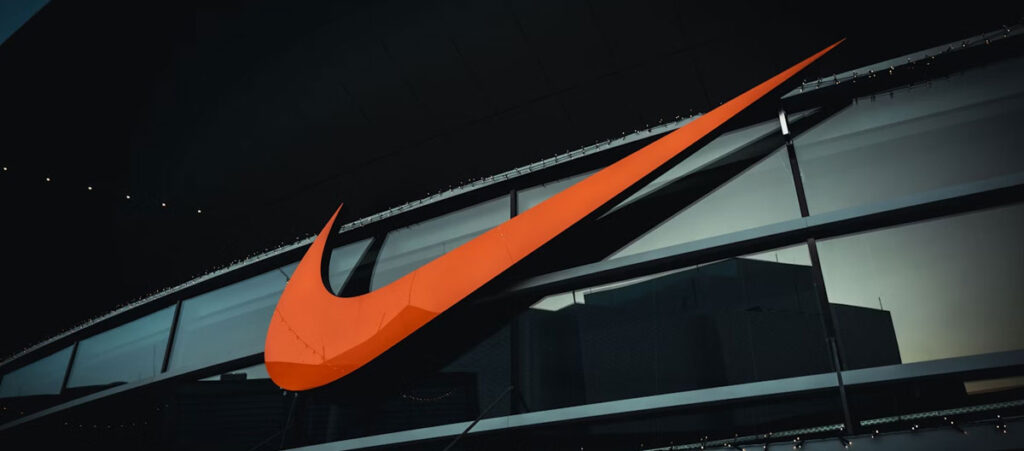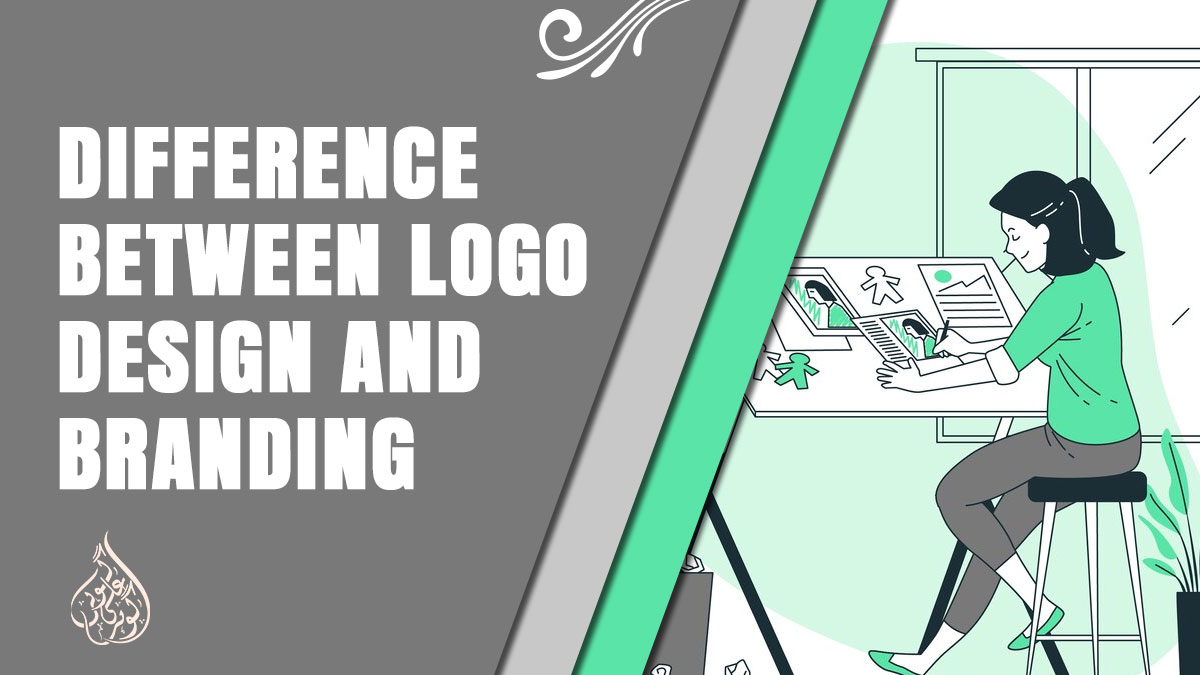In today’s competitive market, standing out can be tough. Many businesses struggle to create a unique identity.
This confusion often starts with misunderstanding the difference between logo design and branding. Companies sometimes think a logo is all they need for a strong brand.
However, this can lead to missed opportunities and a weak brand presence. Even the best logo may fail to make an impact without proper branding.
The good news? Understanding the difference can change everything. By learning how logo design and branding work together, businesses can create a powerful identity.
This can lead to better recognition, loyalty, and success. Let’s dive in and clear up the confusion.
What is a Logo?

A logo is a graphic symbol that identifies a company or product. It’s a simple mark or icon designed to be easily recognizable.
Logos help customers quickly identify a brand. They don’t describe what the business does but represent it in a memorable way.
Think of a logo like a person’s name. It’s not a detailed description but a unique identifier. A well-designed logo helps a brand stand out in a crowded market.
The Apple logo is a prime example of a simple yet powerful design. It’s just an apple with a bite taken out.
This logo doesn’t explain what Apple does, but it has become synonymous with innovation and quality in technology. Its simplicity allows it to be easily recognized and remembered, regardless of where you see it.
The Target logo is another great example. It features a simple red bullseye. This logo doesn’t describe what Target sells, but it is instantly recognizable.
The design is straightforward, making it easy for customers to identify the brand from a distance. The bullseye also subtly reinforces the idea of hitting the mark, aligning with Target’s goal of meeting customer needs effectively.
A logo’s primary function is to create an immediate visual link to the brand. Its design should be simple yet distinctive enough to stand out in a sea of competitors.
By being easy to recognize, a logo helps build brand awareness and loyalty.
What is Branding?

Branding is much more than a logo. It’s the process of shaping how people perceive a company.
It involves creating a unique image and emotional connection with the audience. Branding includes everything from the company’s values to its communication style.
While a logo is just one part of branding, the whole process builds a complete identity. It’s about how the brand makes people feel and how it’s perceived in the market.
Effective branding ensures that everything a company does reflects its core values. This consistency helps in creating a strong, lasting impression.
Nike’s branding extends far beyond its iconic swoosh logo. The brand is synonymous with athleticism, innovation, and empowerment.
Nike’s “Just Do It” slogan and its inspirational advertisements reinforce these values.
Whether it’s through their products, advertising campaigns, or sponsorship of athletes, Nike’s branding consistently communicates its message of motivation and performance.
This strong brand identity helps Nike maintain its position as a leader in the sportswear industry.

Starbucks is another example of effective branding. The company’s brand is built around the idea of providing a premium coffee experience.
From the green mermaid logo to the cozy store ambiance and the personalized service, every element of Starbucks’ branding contributes to a cohesive identity.
Their emphasis on customer experience, high-quality products, and social responsibility reflects their core values.
This comprehensive approach to branding helps Starbucks create a strong emotional connection with its customers.
In short, branding is about crafting a comprehensive identity that resonates with customers on multiple levels.
It encompasses the values, experiences, and emotional connections that a brand creates, going far beyond the logo to build a lasting and meaningful impression.
Key Difference Between Logo Design and Branding
1. Purpose and Function
Logo design is all about creating a symbol or mark. Its main purpose is identification. A logo helps people quickly recognize a business or product.
Branding, on the other hand, is a broader strategy. It shapes how people perceive a company. Branding includes the logo but goes beyond it to build a complete image and emotional connection.
While a logo is a visual tool, branding is about the entire experience and perception of a brand.
2. Components and Elements
Logo design involves specific visual elements. This includes typography, symbols, and colors. The goal is to create a mark that is simple, memorable, and recognizable.
Branding uses many elements. This includes the brand’s essence, positioning, and identity. Branding also covers advertising, customer service, and overall communication. It’s a comprehensive approach that includes and expands upon logo design.
3. Process and Approach
Logo design follows a creative process focused on visual representation. Designers work on making a logo that fits the brand’s identity.
Branding is a strategic process. It involves developing a brand’s entire identity, including its values and mission. Branding is about creating a cohesive strategy that integrates all aspects of the brand.
The Role of Logo Design in Branding
1. Key Functions of a Logo
A logo serves several key functions in branding. Its primary role is to provide immediate identification. When people see a logo, they should recognize the brand instantly.
A well-designed logo helps in brand recall. It’s a visual representation that customers can remember and associate with the company. This can make a significant difference in a crowded market.
2. Enhancing Brand Recognition
Logos play a crucial role in brand recognition. They are often the first thing people notice about a brand. A strong logo can make a brand stand out and be easily identifiable.
By consistently using the logo across various platforms, businesses can create a cohesive image. This helps reinforce the brand’s identity and makes it more memorable.
3. Building Brand Consistency
Consistency is key in branding, and the logo is central to this. A logo helps maintain uniformity across different touchpoints. Whether it’s on a website, packaging, or advertisements, the logo ensures that the brand looks the same everywhere.
This consistency builds trust with customers. When they see the same logo and branding elements, it reinforces their confidence in the brand’s reliability.
4. Creating Emotional Connections
An effective logo can also foster an emotional connection with the audience. When designed thoughtfully, a logo reflects the brand’s values and personality.
This emotional link can enhance customer loyalty. A logo that resonates with people can make them feel more connected to the brand.
Read this: How to make the best logo design?
Common Misconceptions About Logo Design and Branding
1. Logos Are the Same as Brands
A common misconception is that a logo is the brand itself. Many people think that if they have a logo, they have a brand.
In reality, a logo is just one element of a brand. While it’s important, it doesn’t encompass everything a brand represents. Branding involves a lot more, including the company’s values, personality, and customer experience.
2. Branding is Just About Visuals
Another misunderstanding is that branding is all about visual elements like logos and colors. While visuals are important, branding also includes the brand’s voice, values, and customer interactions.
Branding is about how a company makes people feel. It’s the entire experience a customer has with the brand, not just its appearance.
3. A Good Logo Equals a Strong Brand
Some believe that a good logo will automatically create a strong brand. However, a logo alone won’t build a brand’s reputation or loyalty.
A strong brand requires a comprehensive strategy. This includes consistent messaging, quality products, and excellent customer service. A logo supports this, but it’s not the sole factor in creating a successful brand.
4. Branding is a One-Time Effort
People sometimes think that branding is a one-time project. They might invest in a logo and stop there, assuming their work is done.
In truth, branding is an ongoing process. It requires continuous effort and adaptation. As markets and customer expectations change, brands need to evolve and stay relevant.
5. Logos Can Fix a Weak Brand
Lastly, some believe that a new logo can fix a weak brand. While a fresh logo might help, it’s not a cure-all.
A logo can enhance a brand’s image, but it won’t solve deeper issues. If a brand has fundamental problems, they need to be addressed through a complete branding strategy.
Here’s the elaboration for the “The Importance of a Cohesive Branding Strategy” section:
The Importance of a Cohesive Branding Strategy
1. Building a Strong Brand Identity
A cohesive branding strategy is essential for building a strong brand identity. It ensures that all aspects of a brand work together harmoniously. This includes the logo, colors, messaging, and customer experience.
When a brand presents a unified image, it becomes more recognizable. Consistency helps people remember the brand and understand what it stands for.
2. Enhancing Brand Recognition
Recognition is crucial for any brand’s success. A cohesive strategy ensures that all touchpoints reflect the same brand message. This consistency helps in making the brand more memorable to customers.
From online platforms to physical stores, a unified brand image creates a lasting impression. It makes the brand easily identifiable across different channels.
3. Creating a Professional Image
A well-executed branding strategy contributes to a professional image. It shows that a company is serious about its brand and values. This professionalism can enhance trust and credibility.
A consistent approach helps in presenting a polished and credible brand. This can positively influence customer perceptions and attract more business.
4. Improving Customer Experience
A cohesive branding strategy also improves the customer experience. When all brand elements are aligned, customers receive a seamless experience. This consistency helps in meeting customer expectations and building loyalty.
From the website to customer service, every interaction should reflect the brand’s identity. This creates a smooth and positive experience for customers.
5. Supporting Business Growth
Finally, a strong and cohesive brand supports business growth. It helps in establishing a clear market position and differentiating from competitors. A unified brand image can attract new customers and retain existing ones.
A cohesive branding strategy lays the foundation for long-term success. It provides a clear direction for marketing efforts and business development.
Conclusion
Understanding the difference between logo design and branding is crucial for any business.
A logo is a visual symbol that helps identify your company. It’s important for brand recognition but only a small part of the bigger picture.
Branding, on the other hand, is the overall strategy that shapes how your company is perceived. It includes values, communication, and customer experiences.
While your logo plays a key role, effective branding creates a complete and memorable identity. Focus on both to build a strong, recognizable brand that connects with your audience.
